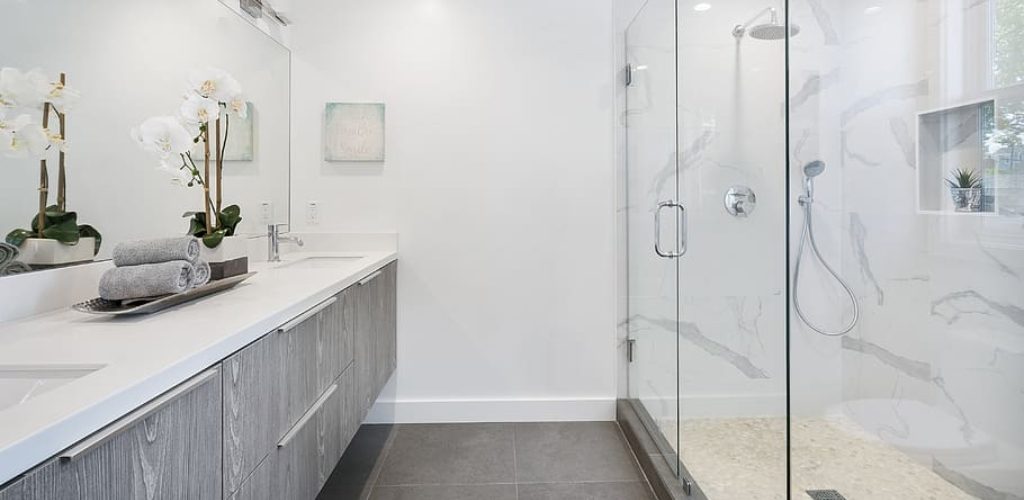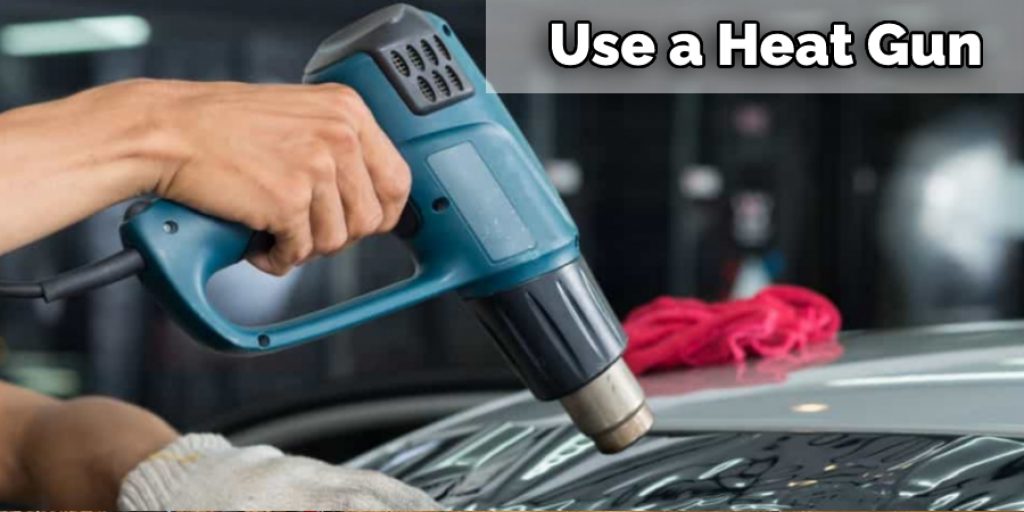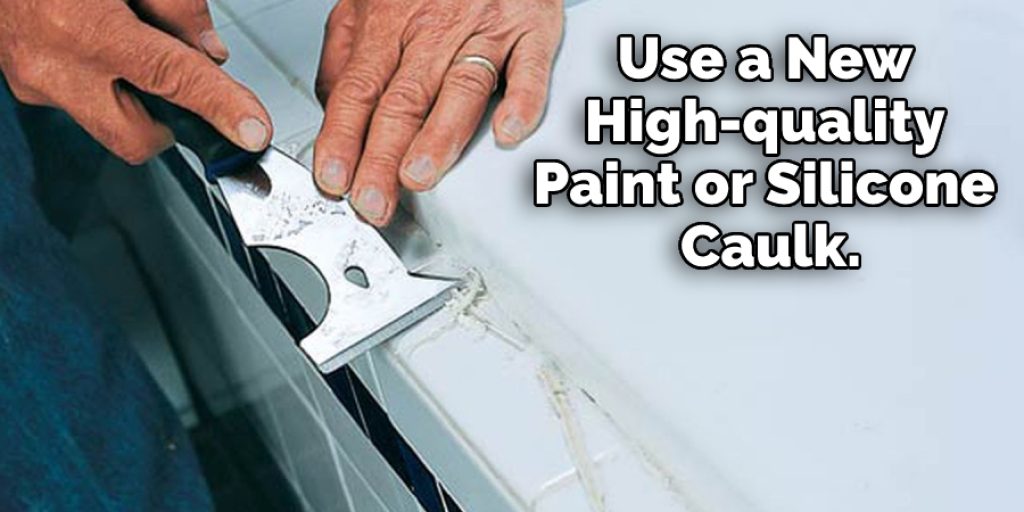How to Remove Caulk Residue From Fiberglass Shower
In this blog post, We will teach you the best way how to remove caulk residue from a fiberglass shower. The key is to use a non-abrasive product that won’t scratch the surface of your shower. You’ll also need some vinegar and water for cleaning up afterward.
There are many reasons why people might want to remove caulk residue from their fiberglass shower surfaces, either because they’re planning on redoing it or just looking for something new. If you’re considering removing old caulking, be sure to read the tips below before starting so that you can avoid any mishaps with your bathroom’s new paint job!

10 Ways on How to Remove Caulk Residue From Fiberglass Shower:
When removing caulk from a fiberglass shower, many different tools can scrape away the old caulk. Unfortunately, sometimes you have to perform multiple tasks to clean your fiberglass shower up and look new again.
This is a guide on how to remove caulk residue from fiberglass showers. If the caulk has become moldy or rotten, it will also have to be removed and replaced. The following solutions are highly effective methods for scraping caulk residue from fiberglass showers.
1. Use Caulk Remover
If you want to get rid of caulk, you can use a caulk remover. This special kind of product is very corrosive and will eat away at most types of caulk. The best part is that it works right away, so you don’t have to wait for days to see results.
2. Use Razor Blades
Razor blades are the next most efficient product that can be used to scrape caulk residue from a fiberglass shower. This tool is usually the least expensive and easiest to use, but if you are not careful, you can scratch or damage the surface of your fiberglass. No damage will be done if the blade is held at just the right angle. After this process is complete, it is recommended that you prime and paint over the area with quality oil-based paint or caulk to protect your shower from future damage.
3. Use Nail Polish Remover
If you have already tried several different paint remover types and have not worked, it is time to try the most common household product nail polish remover. This works very well, but it may take some time to do its job. Add a little nail polish remover to a cotton ball or pad and rub gently over the caulk. Wipe away the residue with a clean cloth.
4. Use Petroleum Distillate
Petroleum distillate is available at hardware stores and can be used to dissolve caulk that has become dry, brittle, or hardened. The only catch is that this product takes quite a while to work; it could take several days for the solvent to soften the caulk enough so that it will wipe away easily.
5. Use Vinegar and Baking Soda
To remove caulk residue from the fiberglass shower, mix equal parts white vinegar and baking soda into a paste. Spread the paste over the dried caulk and let it sit for several hours or overnight until it completely disintegrates. Scrape away with an old credit card which will not harm the fiberglass surface.
6. Use Boiling Water

Fill a cup or bucket with boiling water and pour it over the caulk while wearing rubber gloves to protect your hands from the hot steam. Continue pouring until all of the caulk has softened, then use an old credit card to scrape away the softened caulk. When finished, clean the shower with a clean wet towel or cloth and a household cleaner.
7. Use a Heat Gun
A heat gun, commonly used to strip paint off of metal surfaces, may also be used on caulk residue on fiberglass showers. Again, make sure you wear rubber gloves to protect your skin from the hot steam created by the heat gun. This method works quickly but may need to be repeated several times until all caulk has been removed.
8. Use a Hair Dryer
A hairdryer or heat gun will also work on caulking residue on fiberglass showers. Make sure you wear your rubber gloves while using either of these tools to prevent injuring your hands. Do not hold the hairdryer in one place for too long, as this will cause heat damage to the fiberglass surface.
9. Use a Scraper
A regular scraper or putty knife may also be used to scrape off caulk residue from fiberglass showers. This method works best if the shower has not been used for some time and all of the caulk has dried out. Use an old credit card to ensure you do not scratch the surface of your shower by using too much pressure.
10. Use a Power Washer
Finally, use of a power washer may be used to remove the caulk residue from fiberglass showers. Make sure you wear protective eyewear and rubber gloves while using this tool to protect yourself against flying debris. The entire surface of your shower must be thoroughly wet before beginning so that no damage will be done to the surface of your fiberglass.
Tips to Prevent Caulk Residue in Fiberglass Shower:
1. Don’t use old caulk or crummy sponges to clean it. If you do, the resulting residue could get into the pores of the fiberglass and cause problems later, like staining if something is spilled on it.
2. Use a new high-quality paint or silicone caulk.
3. Spread it thin and smooth, then go back and fill in any low spots after the first pass has dried, but only if needed. If you don’t need to add more, your final layer can be thicker and won’t crack as easily later on.
4. Let it dry completely before using water on it. Water will dissolve caulk if it’s still wet.

5. If you need to remove it but still want to use it again, consider using a heat gun and a plastic scraper or maybe even carefully cut out each bead of caulk with a sharp knife and replace it sometime later.
What Causes Caulk Residue in Fiberglass Shower?
Caulk in a fiberglass shower is a substance used to caulk the seams between tiles or slabs of glass. Residue from the caulking can accumulate over time and become difficult to remove after time. View Points discusses removing this type of residue from your fiberglass shower.
Caulk is typically made from silicone or polyurethane. Over time, residue can accumulate in the seams between tiles and cause a material buildup to make cleaning difficult. Removing this type of residue from your fiberglass shower requires a simple process that will leave the shower looking new again.
Things to Consider When Removing Caulk Residue From Fiberglass Shower:
1. Do Not Use the Wrong Caulk Remover:
Some caulk removers are made for different types of surfaces. Using the wrong kind on your shower could damage the surface, or worse, you might not remove any residues! Please read the ingredient label before using it in your shower.
2. Get Your Shower as Dry as Possible:
It won’t be removed well if you try to remove caulk with wet surfaces. So it’s best to wait until the shower has adequately dried so that you can remove all the residues effectively.
3. Use a Razor Blade to Scrape Away the Remnants:
Get yourself an old razor blade and scrape away at the leftover caulk remnants on your fiberglass shower walls. If you don’t have any razor blades around, sandpaper or another hard object will work.
4. Clean the Area Thoroughly:
When you’re done removing all the caulk, clean the area with soap and water to remove any excess materials. Ensure all residue has been removed, or your sealant won’t last too long!
5. Prep the Area for Your New Caulk:
Before shopping for a new caulk, you will want to ensure your shower is as clean as possible. To do this, wipe down the area with vinegar and let it dry. Afterward, apply a thin sealant layer on the residue-free fiberglass shower walls.
6. Wait for the Caulk to Cure:
Place a few heavy objects on top of the caulk before leaving so it doesn’t dry too quickly. Usually, after several hours, your new caulk will be ready to use, but follow the instructions that come with your sealant for the best results.
7. Be Careful When Using Acid-Based Caulk Removers:
Some acid-based removers can eat away at your fiberglass shower surface if left there too long. Even if the residue is already dry, acid-based remover can eat away at your shower. Make sure to rinse it off with soapy water right away.
8. You Can Use a Heat Gun or Hair Dryer to Speed up the Process:
If you have a lot of caulk residue to remove from your shower, a blow dryer can help. Use a safe setting and move it back and forth over the area until all the caulk has been removed.
Frequently Asked Questions
Will Goo Gone remove caulking?
There is no one-size-fits-all answer to this question, as the effects of Goo Gone on different types of caulking will vary. However, Goo Gone is generally an effective tool for removing various household stains and finishes.
Some common uses for Goo Gone include:
• Removing lipstick and other stains from clothing and fabrics.
• Clearing up oil and grease spills on surfaces.
• Cleaning off dried foodstuffs from countertops, floors, and other areas.
Does Krud Kutter caulk remover work?
There is no definitive answer to this question as opinions will vary. However, based on our information, it seems that Krud Kutter caulk remover may not be the best choice for removing caulk.
Some potential reasons why Krud Kutter caulk remover may not be effective include:
- It may not be effective at breaking down the seal that has been created between the caulk and the surface it is applied to.
- It could also cause damage to the surface that it is being used on.
Will mineral spirits remove silicone caulk?
Mineral spirits are not effective at removing silicone caulk. Silicone caulk is a type of sealant that is made of silicone and other materials. It is used to protect surfaces from moisture and other contaminants.
You will need to use a different solvent or cleaner to remove silicone caulk. Some possible cleaners that may be effective include: acetone, denatured alcohol, mineral spirits, and paint strippers.
Will rubbing alcohol remove caulking?
There is no definitive answer to this question as it depends on the type of caulking and how well it has been applied. Rubbing alcohol may remove some types of caulking, but it is not likely to completely remove it.
Does rubbing alcohol soften caulk?
Yes, rubbing alcohol can soften caulk. However, it is important to use caution when using this method as it can cause damage to the surface that you are trying to fix.
Conclusion:
Cleaning a fiberglass shower is no easy task, but it’s worth it for the sparkling results. To get rid of the caulk residue, you must first remove all traces of soapy water from the surface to which you applied it by using a cloth or sponge and wiping downward in one direction, then rinse with clean water until there are no more soap bubbles on the surface.
Once that’s done, focus on removing any remaining residue from around seams where two panels meet or touch each other. For this step, use an old toothbrush dipped in mineral spirits. Scrub along these seam lines until all trace of caulking has been removed for good! We hope you have some insights on removing caulk residue from fiberglass showers by going through this blog post.




